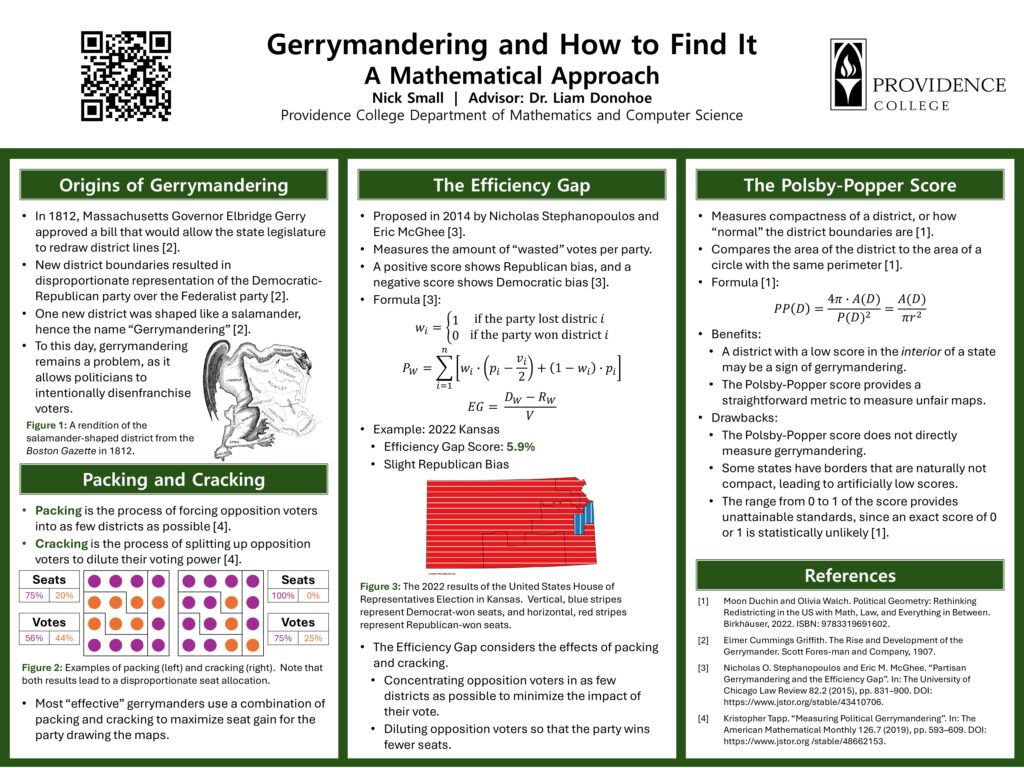Nicholas Small ’25

Gerrymandering and How to Find it:A Mathematical Approach
Nicholas Small ’25, Mathematics and Computer Science major
Faculty mentor: Dr. Liam Donohoe, Mathematics and Computer Science
Gerrymandering is a phenomenon that has plagued American politics for over 200 years. This process, which involves redrawing congressional and legislative district boundaries to favor one group over another, has become a fact of life in the past few decades. This project explores the history of gerrymandering and some of the algorithms proposed to combat it. The two main strategies of Gerrymandering are packing—or limiting the other group’s influence by making them the extreme majority in a few districts—and cracking—or splitting up a powerful opposition voting bloc into multiple districts. A “successful” gerrymander often implements both of these strategies. The algorithms used to shine light on these methods can be divided into two primary categories: measures of proportionality, which include the Efficiency Gap, and measures of compactness, which include the Polsby-Popper Score. Both types of measures have their benefits and drawbacks, and a combination must be used to ensure that legislative maps are drawn fairly.
Poster Presentation: Wednesday, April 23, 11 a.m. – 12:30 p.m.






